The Music Modes
Home » Piano Theory » Music Modes ,
The story of the musical modes starts in ancient Greece. The Greeks were the one to name the different modes after ancient Greek subgroups; the Locrians and the Dorians. Phrygia and Lydia were places with non Greek people close by.
Later in the 9th century the church modes originated. Theorists took the Greek modes and applied them to their own concept.
As time went on the music modes became less popular and composers preferred to stick to the Major and Minor scales for the concept of harmony has changed from being modal to being Diatonic. You'll understand later what I mean by that.
So why do I bother at all explaining you about the music modes if they weren't used so often as time went by.
Well, that's because the modes are a great tool to use when improvising. Soon we're going to talk about choosing the right scale or modes for different chord progressions. Then we'll discover that the modes help us to avoid notes that clash with the chords.
What are the Musical Modes?
Well, until today we've been speaking about scales. Each scale has a certain sequence of tone and half tones (sometimes more) within the range of an Octave.
C major scale for example, is built out of the white keys of the piano starting from C and stepping in the sequence of 1-1-1/2, 1-1-1-1/2.
In this scale we've learned the 7th note is the leading note leading to the root note. We've also discussed the other forces running through this scale.
But happens if we choose to play this scale from a different key? Let's say we start from D?
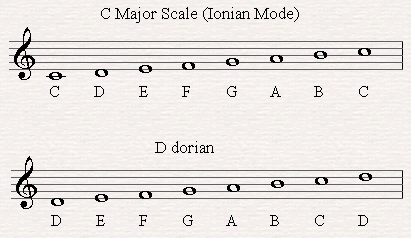
If you'll play and listen to the mode we've create here you'll discover that the impression and mood it creates is completely different then the major scale.
To begin with, this scale has a minor third. So it sounds mellow unlike the major scale.
The seventh note of the scale is a whole tone beneath the root note.
Therefore it can't function as a leading tone any longer.
The 6th note of the scale (B) is raised in relation with the minor scale.
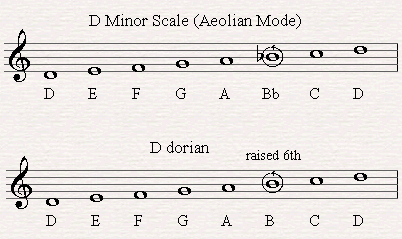
Bottom line this is not really a scale. We've modulated the scale to a mode which is really a sequence of note creating a certain impression. This specific mode is called the Dorian mode. We're going to discuss it later in details.
So what we're doing is changing our state of mind you see. From now on when we talk about the musical mode we won't name the major scale so but we'll call it the Ionian mode since its function is different in this concept.
The minor scale will be name the Aeolian mode and we'll see later how it was created in the church modes system.
The Musical Modes Names
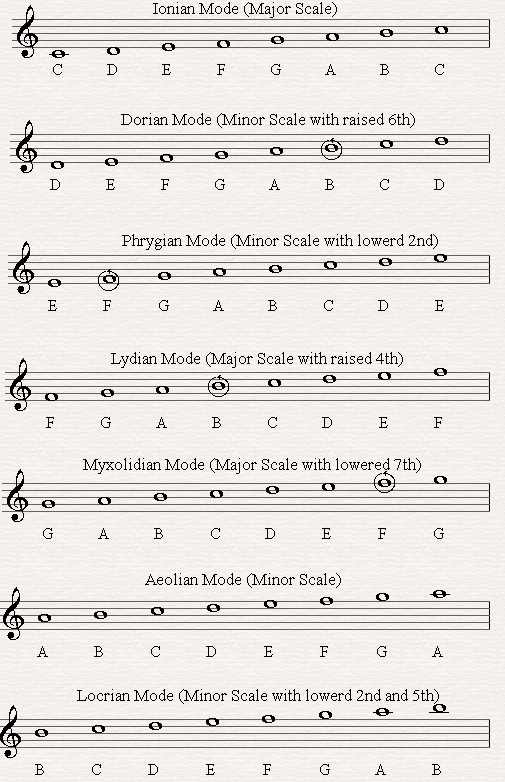
Notice that three of these mode (The Ionian, Lydian and the Myxolidian mode) are having a major third which gives them a major character while that the Dorian, Phrygian, Aeolian and Locrian modes are having a minor third giving the a Mellow character.
Knowing this will help up later when we'll choose to place a fitting mode over a certain chord progression.
The Concept behind Using Music Modes
Now let's see where the mode comes to our aids in the place where the scales fail.
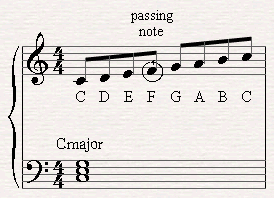
When we play a scale or a mode over a chord we have to be a little bit careful.
If we'll take C major scale for example and play it over a C major chord we'll create a nice melodic line.
But what if we'd like to play the C major scale starting from a different note of the scale?
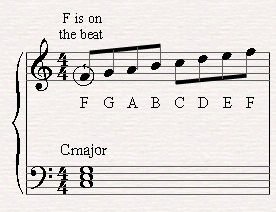
Let's start with F for example...
Wow! That sounds so wrong. How come?
Well, in the first example the F note was being played on the off beat. Its location was on a weaker part of the bar. Since F connected between E and G (both are participating notes of the C chord) it was just a passing note that did not create a clash with the chord.
So what was different in the second example?
Well, this time the F name was played on the beat and not only that it was played on the first beat which is the strongest beat of the bar.
Since F is not a part of the structure of C major chord and since the interval between the third part of the chord (E) and the F note of the melody created a really dissonant interval (the lowered 9th) We have to avoid this note in this location or on any of the beats in that Manner. F could function only as a passing note over a C chord.
That's kind of risky. Every time we'd like to play a C major scale over a C chord (and that happens a lot believe me!) we have to be careful. How can we pass this?
This is where the music modes come to our help.
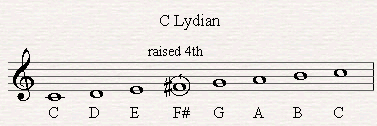
If we'll raise the fourth note (the avoid note) from F to F# sharp we
would be perfectly be able to play the mode we've created with no caution.
The mode we've created is the Lydian mode by the way.
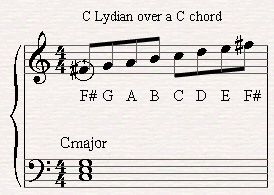
The C Lydian mode derives from G major scale starting from the 4th note C.
Now you can pretty much understand how we can use the music modes as a mean for improvisation.

In order to get the full potential of music modes you should go through the Rocket Piano Ultimate Learning kit. With Rocket Piano you'll learn to use the music modes to improvise by learning about melody, harmony, chords, arpeggios, and how to play interesting melodic lines that can be played upon different chord progressions. Click here to check out the Rocket Piano Learning Kit Now!














